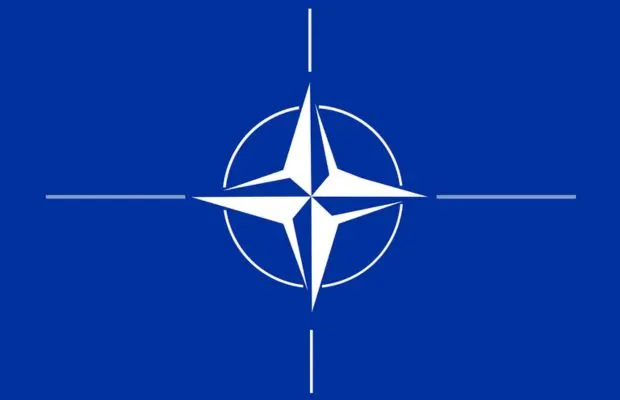Understanding NATO-Russia dynamic on Ukraine Invasion
GEO-POLITICS
After 2022, after Russia invasion of Ukraine, much of the relationship between NATO and Russia had reverted to Cold War situation, to the time of founding of NATO but under different geo-political map.
North Atlantic Treaty Organization (NATO) was first founded under the threat of Soviet Union in 1949 with 12 members (France, Canada, Italy, United Kingdom, USA, Norway, Denmark, Iceland, Luxembourg, Belgium, Portugal and Netherlands) Its main purpose was to defend the freedom and safety of its member, both politically and military. Currently, NATO has 32 members and its headquarters is in Boulevard Leopold III in Brussels, Belgium. The key characteristics of NATO lies in its collective defense policy, meaning an attack on one member is considered an attack on all.
With the collapse of Soviet Union in 1991, Ukraine got the independence they wanted for a long time and NATO original purpose of Soviet Union threat was no longer applicable.
The following years, Russia and NATO relationship got significantly better to the point they were even cooperating and NATO-Russia Founding Act was signed in 1997. NATO strategy shifted from defense to deterrence and the investment in defense in European countries in largely reduced in 2000s.
The Warsaw pact dissolved but NATO was still active and was expanding his presence eastwards. The first expansion began in 1999 which included countries- Czech Republic, Hungary, and Poland. On the surface, the relationship remained stable but undercurrents showed a different situation.
NATO aimed for unified Europe and a larger organization, while most opposed the expansion, the Bill Clinton administration supported and failed to see the expansion from Russian perspective. Russia warned NATO about pushing Europe’s dividing line eastward which sparked outrage from people in Russia and was seen as a provocation. Georgia and Ukraine had shown signed of joining NATO and it was not well received by the Russian Government.
From historical perspective, while Russia recognizes former Soviet Union members independent, with the condition that it will remain neutral and not join the west which both Ukraine and Georgia tried to do. Its effect was overtly seen for the first time when Russia tried to invade Georgia in 2008 and warned NATO from continuing towards Russia borders.

THE TIPPING POINT AND INVASION
Vladamir Putin became president in 2000. His one of the main objectives is to make Russia a superpower again and it was seen in his use of militarized foreign policy was post Ukraine invasion.
Despite repeated warnings to stop the expansion, when Obama administration intervened in Ukraine national political affair and protest against pro-Russian president broke out in 2013 and 2014, it served as the last provocation that led to Russia invade Ukraine in. It was the West realization of Russia’s change in ideology and foreign policy. The consequence were expected but it was too late to realize the precautions should have been taken from the beginning.
Ukraine was invaded again in 2022 after attempts to join NATO. Russia made it clear if the warning do not work, force will be used.
While Ukraine is not part of NATO but it supports its right to self-defense and has a cooperating relationship. NATO condemns Russia acts of aggression and is actively trying to help Russia-Ukraine reach ceasefire agreement through diplomacy. NATO and Russia are not directly engaging but through Ukraine, which is stranded in middle of the both sides.
If we compare the both countries, Ukraine has much more to lose than Russia in international relations and economy. From economic point of view, despite sanctions Russia still is one of the largest exporters of oil, gas and steel, therefore cushioning the cost of military on the other hand Ukraine GDP had shrunk largely and is receiving aid from western countries.
The NATO purpose has reverted to the founding period and it finds itself on the starting point once again. The Russian militarized foreign policy had had left destruction and costed lives. The blame should be borne by the both sides, for Putin for an aggressive and militarized approach, and NATO for ignoring the warning signs.
Citation
Kumar, Dr. (2022). ROLE OF NATO IN RUSSIA-UKRAINE CONFLICT. 09. 39-44.
Fix, L. Keil, S. (April 2022). NATO and Russia after the Invasion of Ukraine. The German Marshall Fund of United States
Omiunu, F. I., Okafor, C. O. & Ngoka, R. O. (2024). North Atlantic Treaty Organization’s Strategy and Its Involvement in the Russian-Ukraine Crisis: A Reflective Analysis, African Journal of Politics and Administrative Studies, AJPAS, 17(2):379-399
(June 2022). A short history of NATO. North Atlantic Treaty Organization
Mearsheimer, J. J. (September-October 2014). Why the Ukraine Crisis Is the West’s Fault. Mearsheimer. Com
Stępniewski, T. 20(2022). Russia-Ukraine war: independence, identity, and security, “Rocznik Instytut Europy Środkowo-Wschodnia” no. 2, pp. 7-16. https://doi.org/10.36874/RIESW.2022.2.1.
